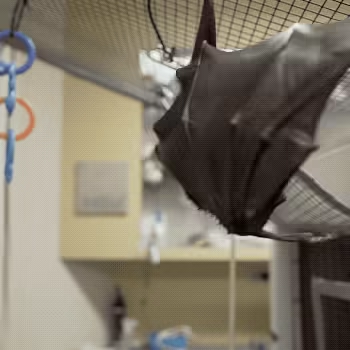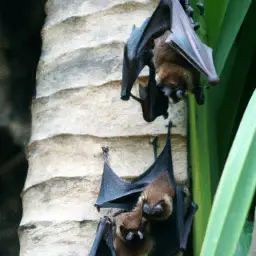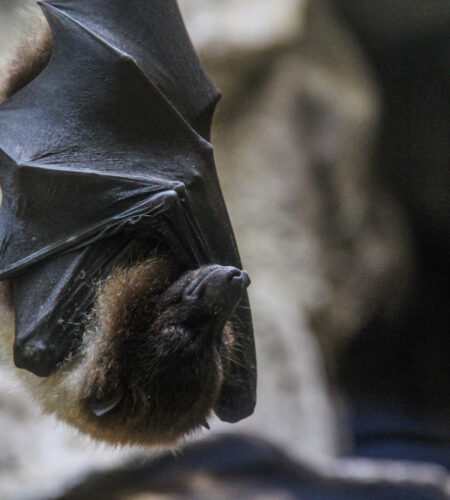Ever wonder how those mysterious creatures of the night, bats, bring new life into the world? It’s a common question do Bats Lay Eggs or have live births.
This post will dive into the fascinating world of bats, their reproduction methods, and clear up some myths along the way.
Understanding Bat Biology
What Are Bats?
Bats are unique among mammals because they can fly. They belong to the order Chiroptera, which means “hand-wing.”
This name comes from the structure of their wings, which are actually their hands with skin stretched between the fingers.
There are over 1,400 species of bats, ranging from the tiny bumblebee bat to the large flying foxes, showcasing a huge diversity.
Do Bats Lay Eggs and How Do Bats Reproduce?

Bats are pretty interesting when it comes to having babies. Unlike birds, bats don’t lay eggs. Instead, they have live babies. Here’s how it happens:
- Mating: Bats usually find a mate in the fall. But they have a special trick: the female can hold onto the sperm all winter and only use it in the spring. This timing makes sure the little bat pups are born when there’s plenty of food around.
- Pregnancy: After mating, the female bat will be pregnant for about 40 days to six months, depending on what type of bat she is.
- Birth: When it’s time, the mama bat hangs upside down to give birth, catching her baby with her wings as it comes out!
So, now you know, bats give birth to live pups, not eggs. Isn’t that cool?
The Reproductive Cycle of Bats
When Do Bats Mate?
Bats typically mate during the fall or winter. However, the timing can vary depending on the species and the environment they live in.
For some species, females store the sperm during winter and delay fertilization until the spring, which ensures that the pups are born at a time when food is plentiful.
Gestation Period in Bats
Did you know that bats have different lengths of pregnancy depending on their size and where they live? Let’s break it down:
- Length of Gestation: It varies! Smaller bats might be pregnant for just 40 days, but bigger bats can carry their pups for up to six months.
- Why It Varies: Two big reasons:
- Species: Bigger bat species generally need more time before their pups are ready to be born.
- Environment: If food is scarce, the pregnancy might take longer. This helps ensure that the pups are born at a time when surviving is easier.
So, the next time someone asks if bats lay eggs, you can tell them not only do they not, but their pregnancies are pretty fascinating too!
Bat Birth and Care of Young
How Are Baby Bats Born?
Watching a baby bat come into the world is quite the sight. Here’s what happens:
- Upside Down Birth: Female bats hang upside down to give birth. This unique position helps them catch and protect the newborn as it arrives.
- First Moments: Right after birth, the newborn bat, called a pup, clings to its mom. They’re super tiny and can’t do much on their own yet.
- Mom’s Care: The mother bat doesn’t just stop at giving birth. She feeds her pup with her milk and keeps it warm, all while hanging upside down. She does all this until the pup grows big enough to fly and find its own food.
So, bats don’t just have an unusual way of living; their way of bringing new life is pretty special too!
Challenges in Bat Reproduction
Reproduction for bats isn’t always easy. They face numerous challenges, including habitat loss, climate change, and diseases like white-nose syndrome. These issues can adversely affect their ability to reproduce successfully.
Debunking Myths: Do Bats Lay Eggs?

Why Some People Think Bats Lay Eggs
It’s easy to get mixed up about bats. Some folks think bats lay eggs because they’re similar to birds in some ways—like flying. But here’s the deal:
- Flying Creatures: Both bats and birds fly, so it’s common to lump them together. But bats are mammals, not birds.
- Nocturnal Nature: Bats are active at night, which adds to their mysterious vibe and leaves room for myths.
- Myth vs. Reality: Just to set the record straight—bats give birth to live young, not eggs. This fact often surprises people because it’s less common in the animal kingdom for flyers.
By clearing up this mix-up, we can better appreciate these fascinating night-flyers for what they truly are!
The Importance of Bat Conservation
Why should we care about bat conservation? Well, bats are incredibly important to our world, and here’s why:
- Ecosystem Helpers: Bats do a lot for us. They pollinate plants, spread seeds, and keep bug populations in check.
- Biodiversity Boosters: By helping plants reproduce and managing insects, bats support a healthy and diverse ecosystem.
- Conservation Efforts: Protecting bats means understanding their life cycles and habitats. This knowledge helps us make smarter choices about land use and wildlife protection.
So, keeping bats safe helps keep our environment balanced and healthy. Let’s give these unsung heroes the respect and protection they deserve!
Conclusion: Do Bats Lay Eggs?
So, do bats lay eggs? No, they don’t. They are fascinating mammals that give live birth and care deeply for their young. By learning about bats and debunking myths, we can appreciate their role in nature and the importance of conserving their populations.
FAQ Section
No, bats do not lay eggs. Instead, they are one of the many fascinating mammals that give birth to live young. Each baby bat, known as a pup, comes into the world fully formed and ready to cling to its mother.
Most bats have just one pup at a time, although some species can have twins. This low birth rate makes each pup very precious to the survival of its species, and the mother bat invests a lot of care in each one.
Baby bats stay with their mothers for a good chunk of time, usually a few weeks to several months. During this period, the pup relies on its mother for milk and learns important survival skills.
No, baby bats are far from independent when they’re born. They rely heavily on their mother for warmth and food. The mother bat’s care is crucial during the early stages of a pup’s life until it can fly and feed on its own.
Bats are incredibly beneficial to the environment. Here’s what they do:
– Pollinate plants: Many plant species rely on bats for pollination.
– Control insects: Bats eat tons of insects, helping control pest populations naturally.
Baby bats feed on their mother’s milk until they’re ready to start hunting on their own. This milk provides all the nutrients they need to grow strong and healthy.
Bats can be quite mobile, depending on the season. Some travel long distances to find the perfect spot to hibernate or mate, while others might stay in the same area but seek out different roosts that suit the weather.
Yes, bats can see at night, but they don’t rely solely on their vision. They use a special skill called echolocation to navigate and find food in the dark, which is much more effective than just eyesight.
Generally, bats prefer to stay away from humans and aren’t dangerous. However, they can carry diseases, so it’s best to admire them from a distance and not disturb their habitats.
Bats face several threats, including habitat destruction, climate change, and diseases like white-nose syndrome. These challenges make conservation efforts increasingly important to ensure their survival.

